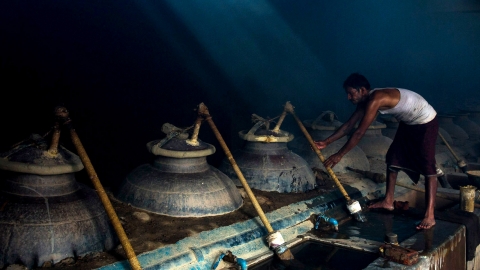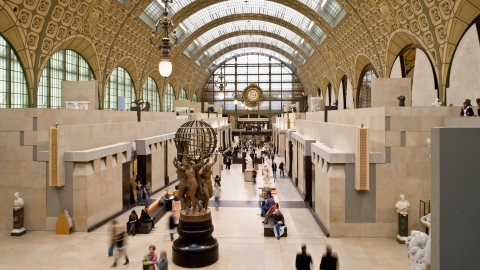The Silk Roads
The concept of "the East" is understood to be the range from Eastern Europe through Central Asia and then deep into China and India; holding a central position in global political, commercial and cultural activities and shaping the modern world. In the Western view, the East was once considered a less developed region than the West, forgotten in mainstream history, but this place was the cradle of great civilizations.
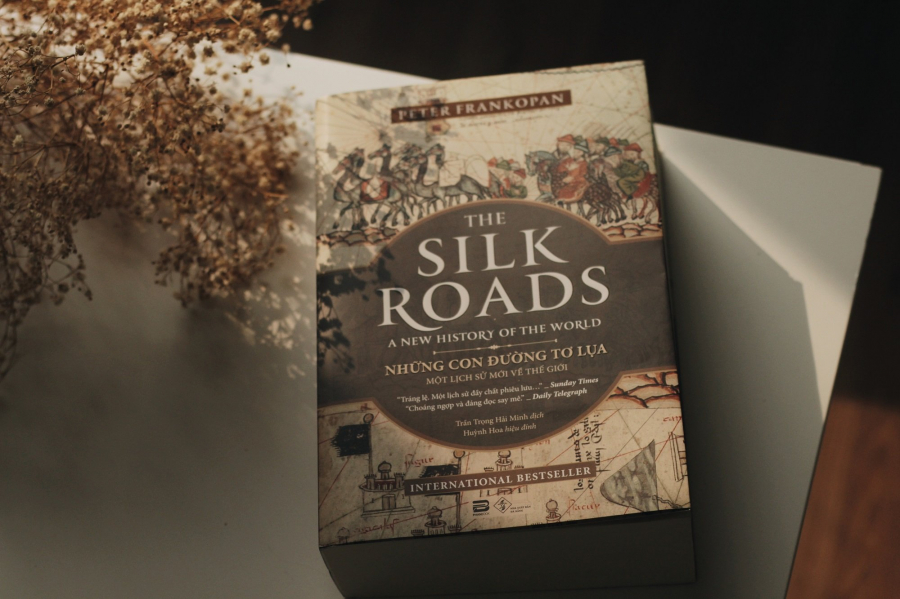
The bookThe Silk Roads(The Silk Roads: A New History of the World) by Peter Frankopan is a sophisticated global history reference book that will organize and rearrange the reader's understanding of the world from an Eastern perspective. In it, the "silk roads" in the East are not only the flow of goods, ideas, religions, diseases... but also the rise and fall of empires; the spread of major religions around the world: Buddhism, Christianity, Confucianism, Islam...
With a large amount of knowledge, new thinking and attractive travel language, the book takes readers through each continent and helps them better understand the concept of economic and cultural globalization and the shifting connections of civilizations throughout history.
Journey to the East

Journey to the Easttells the experiences of a scientific delegation consisting of leading experts of the Royal Society of England sent to India to research occultism and supernatural abilities of humans. During two years of wandering around Indian temples, witnessing many magical spells, many scenes of superstition, even fraud by many magicians and priests..., they had contact with wise monks living in seclusion in towns or on the Tuyet Son range. Thanks to that, they witnessed, experienced, and deeply understood the ancient and esoteric sciences of Indian culture such as yoga, meditation, astrology, health preservation and healing methods, knowledge of cause and effect, karma, the law of cause and effect, life and death...
The East glides out the window
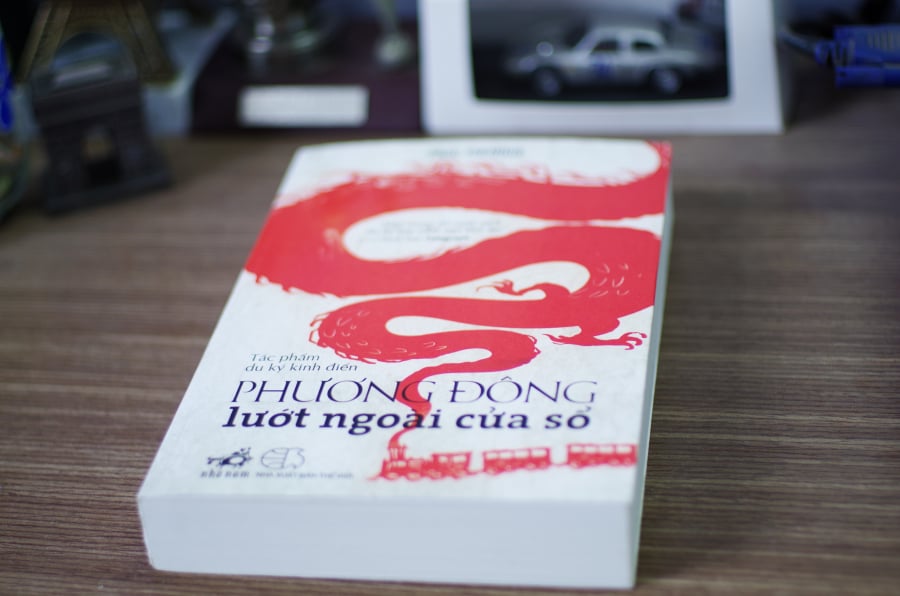
For Paul Theroux, the Eastern trains were like markets that attracted him with their full flavor and color, with their mysterious, strange qualities that could not be explained. He boarded those trains, traveling for four months across Asia, to paint each piece of the vast Eastern picture: Türkiye with its unique culture and hidden sexual repression, Afghanistan in turmoil, India with its glittering temples but poverty and fantasy, Singapore with its neatness down to the last detail, Thailand with its smell of entertainment and sex, Japan with its conveniences but people seem to have become machines...
He also visited Vietnam, took a train across Hai Van Pass, and was surprised to realize during the journey that this was the land of the most poetic natural scenery...
His writings made Asia appear as if it could be touched, tasted, smelled, and stirred in us the urge to one day leave behind our familiar, boring lives, pack our bags, and hop on a train somewhere, to experience all the sounds of the vastness of life.
Dalat under the mist
Dalat under the mistare the cold, dry, cruel moments of history when all the layers of mist and smoke have been peeled away. The human perspective at this time is no longer vague, but only the years and exact events that took place. History is returned to its true meaning: containing events related to the land and people of Da Lat.
With 400 books, author Nguyen Vinh Nguyen had to flip through thousands of pages of text and hundreds of documents from many historical periods of Dalat to make a concise record, helping readers visualize what has been hidden under the mist.
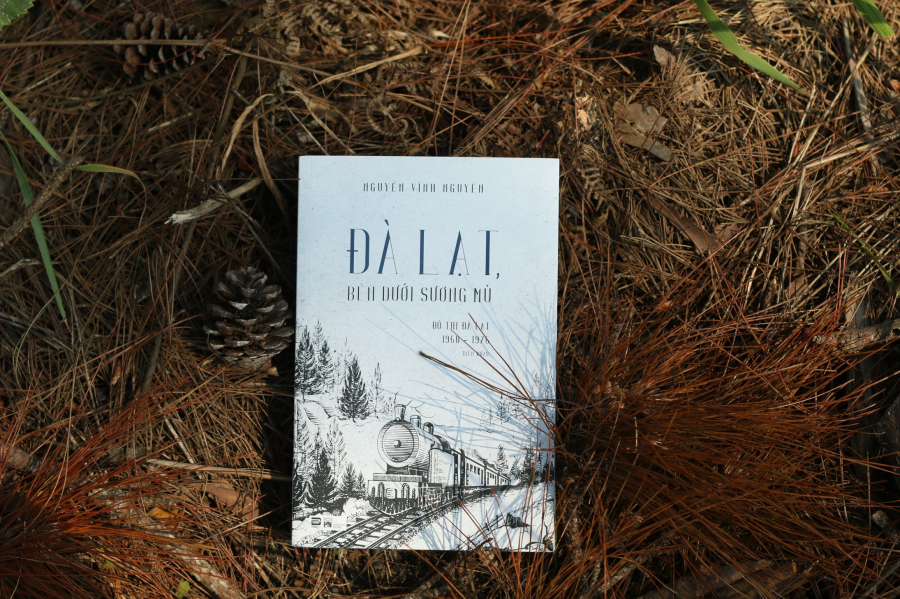
“There are documents that have a corner burned. There are bundles of moldy files, pins that crumble when touched by human hands. There are pages of documents with blood stains. And there are events hanging in limbo with no clear beginning or end…”
Shadow on the Sand
Shadow on the sandre-enacts the journey in the footsteps of Master Xuanzang to India to seek Buddhist scriptures in the 7th century. The work begins with a brief introduction to the lives and careers of four great people who influenced Buddhism, including: Buddha, King Ashoka, Master Xuanzang and archaeologist Cunningham. The journey is divided into three stages: Stage 1: Nepal - India journey; Stage 2: Kyrgyzstan - Uzbekistan journey; and Stage 3: China journey.
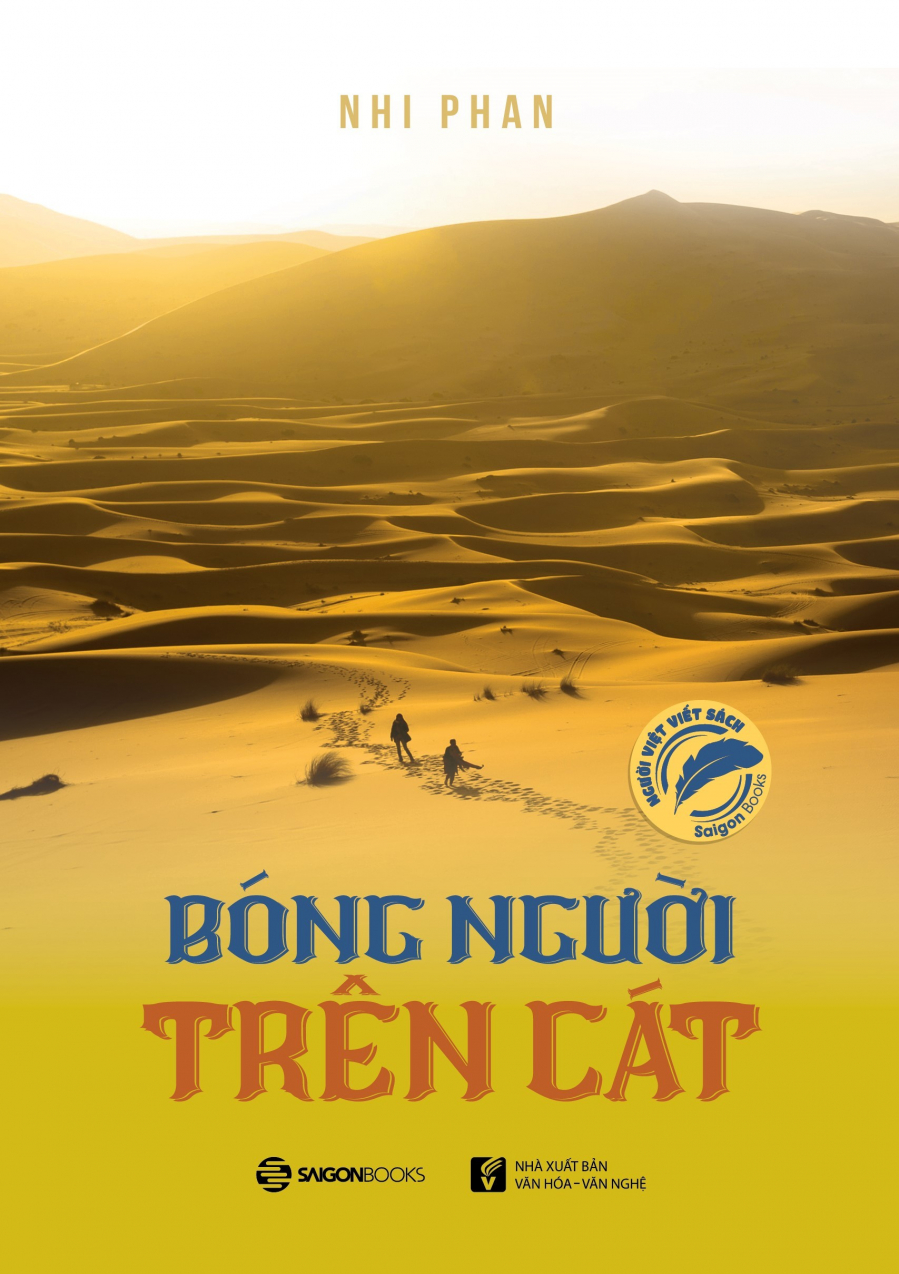
In addition to focusing on describing the unique cultural features, religious changes, historical values, natural beauty and people in the lands marked by Huyen Trang's footsteps, the book also shares touching stories about the lives of the characters that the author had the opportunity to meet and interact with at transition points in the journey, such as Kathmandu, Novosibirsk airport, Naryn, or at additional sightseeing places such as Ala Archa National Park, Ham Huong mausoleum, Qin Shi Huang mausoleum, Xi'an night market, Bach Ma pagoda... All of them make readers feel a kind heart; feel warm about the modesty and sophistication in the way of storytelling; feel interesting with the elegant appearances and disappearances in old stories...
The Land Near the Sky
There are eagles, grasslands, tents and flocks of sheep grazing on clouds in the morning light of a thousand colors and scents...; there are nomads drinking milk, eating bread and gravy under the starry sky. By the firelight, stories about horses, camels, mastiffs and brave horsemen are passed down from generation to generation, along with modern tales about cars, about the tiny Saravag that guards the sky, about salt stones in the mines, monuments, ancient temples...
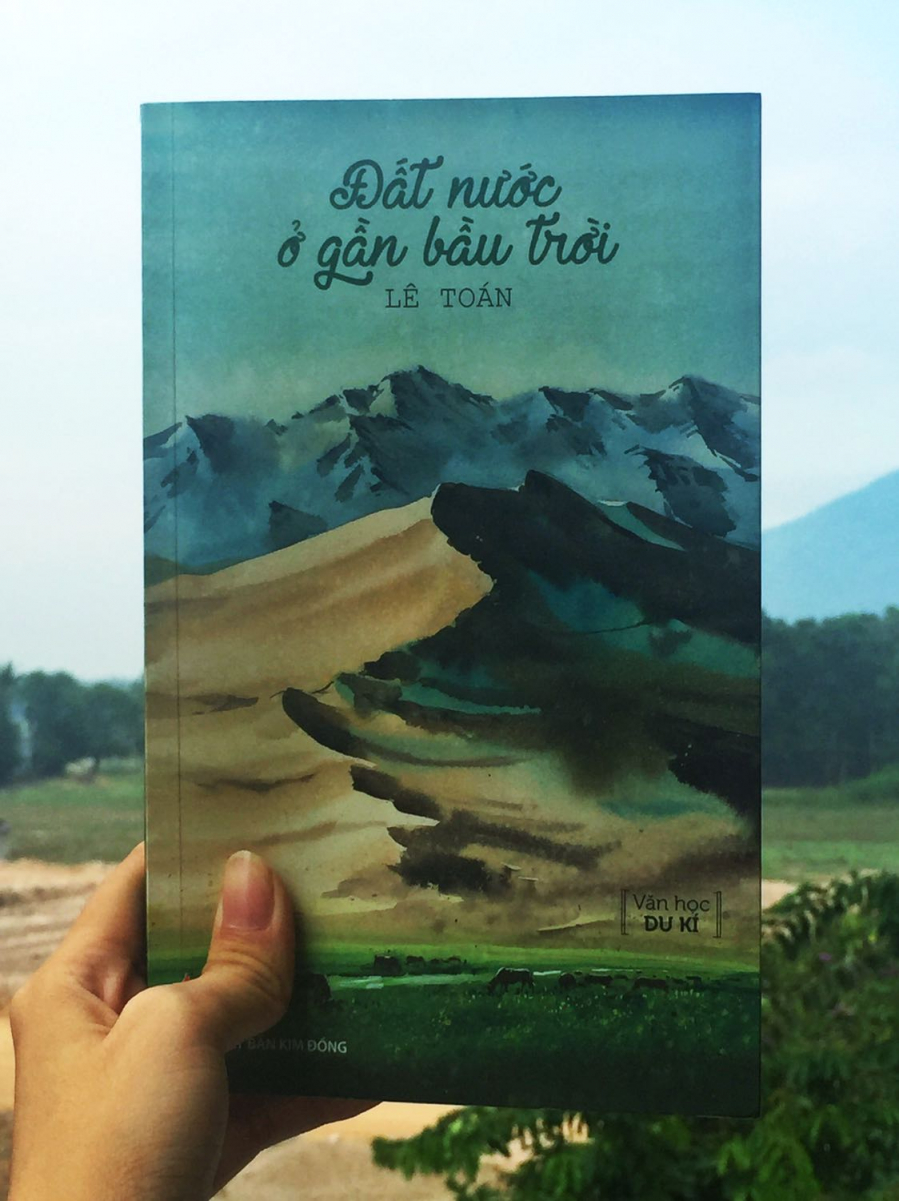
And there are many more amazing things waiting for you to discover in Mongolia - "the country near the sky"!
Cloud Road Through Snow Country
Cloudy Road Through the Land of Snowrecords what Anagarika Govinda witnessed during his travels in Tibet. The author's journey took place between the 1930s and 1950s, before the complex political developments that led to the annexation into the territory of the People's Republic of China as it is today. At that time, a part of western Tibet was considered to be under the control of the British colonial government, so the author traveled from Sri Lanka to India and then penetrated western Tibet (all of which were British colonies), with travel documents controlled by the British. For the latter part of the journey, the author went deep into the eastern part of Tibet, which was under the control of the Lamaist government in Lhasa, so he had to apply for additional travel documents from this government.
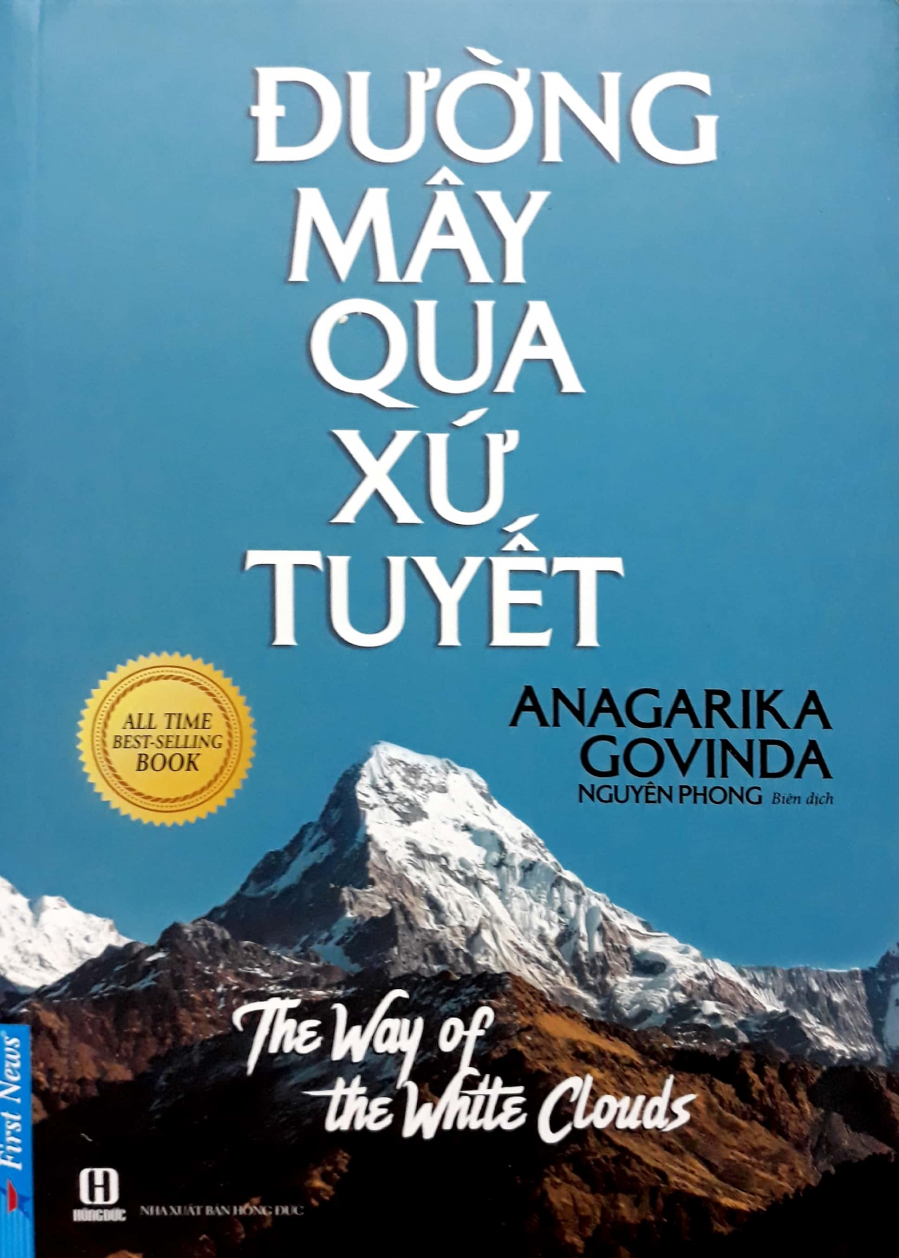
In fact, from ancient times until now, Tibet was only considered a closed mysterious land, a link on the legendary silk road, so although it was invaded many times, the temporary occupying governments gradually "abandoned" this land; therefore, this place was headed by spiritual advisors, the Lamas, the highest of which was the Dalai Lama. From the Western perspective, Tibet was considered a part of the Indian kingdom (which also included the countries of Pakistan, Nepal, Bhutan, and Bangladesh today) because this place was more influenced by Indian beliefs and religions than by China.
The political developments from the 1950s onwards have certainly had some influence on the customs and religious life of Tibet. However, if one studies and puts one's mind back to the period before these complex changes took place, the reader will feel more clearly the "Freedom", the profoundness and the originality of Tibetan Buddhism that the author Anagarika Govinda wants to convey.
HIMALAYA - Journey to Touch the Sky
The book was written when Mai Lan and her companion were on their way back to Salleri - the closest point to Sagarmatha National Park that can be reached by car. The two trekked to an altitude of 5,364 m above sea level, through countless mountain passes, rivers and streams with a total distance of more than 200 km. They chose to start and end their trekking trip from Salleri, instead of Lukla as usual plans of tourists, to avoid the super expensive 45-minute flight from the capital Kathmandu of Nepal to Lukla - known as one of the most dangerous airports in the world. Choosing Salleri means having to travel twice as long, with twice as many mountains and passes to cross, but certainly, there will be many more wonderful experiences waiting. And this trip turned out to be much more brutal than Mai Lan could have imagined, but also more memorable than any journey she had ever experienced. Although I had previously traveled to 22 countries on 3 continents by hitchhiking.
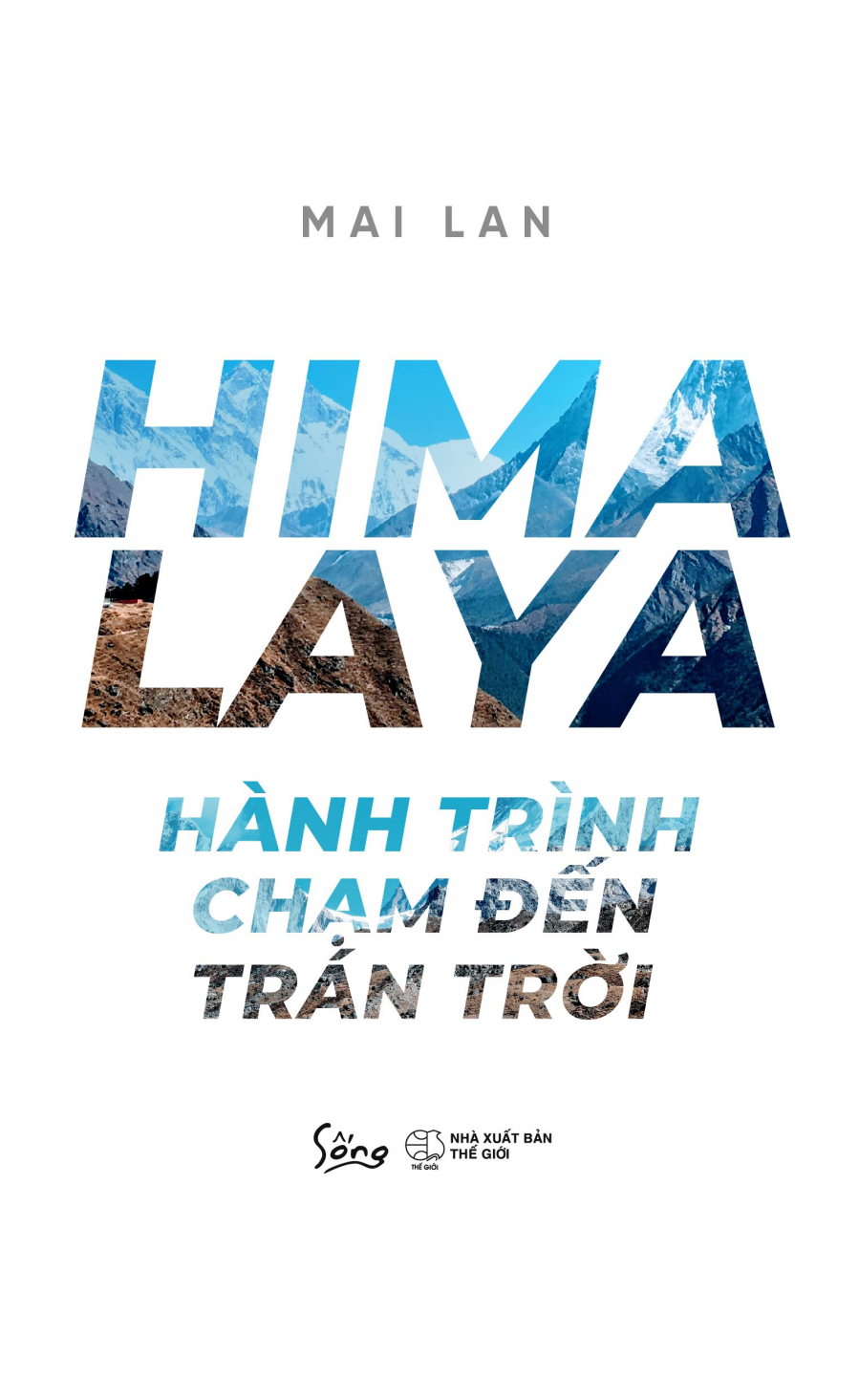
The author's trekking trip to Everest Base Camp with his companion - a journey that seems purely physical but opens up unexpected and unique discoveries in the inner self. The absolute majesty and greatness of the highest peaks in the world, projected onto the small human being, makes us realize the pure and identical nature of everything and of ourselves. Interwoven in the story are very human psychological developments when facing difficulties or challenges, being subjective, trying, being discouraged, then trying again until almost giving up. The message given is very simple, happiness is always hidden in every moment of life, when we understand others as we try to understand ourselves, there will no longer exist negative and empty emotions, every person born has the ability to be completely happy, because true happiness comes from within.
Vanishing - A Memoir of the Everest Disaster
Disappearis the last memory of the most tragic climbing season in Everest history, which happened on May 11, 1996, as recounted by the world's leading memoirist - Jon Krakauer - in his memoir and became a controversial topic for a long time in the American media.
Jon Krakauer is a survivor of that tragedy, and the vivid, heroic, tragic and dark side of mountaineering is described in this memoir. He takes the reader step by step from Kathmandu to the deadly peak, unfolding a breathtaking story that makes the reader shiver and shudder.
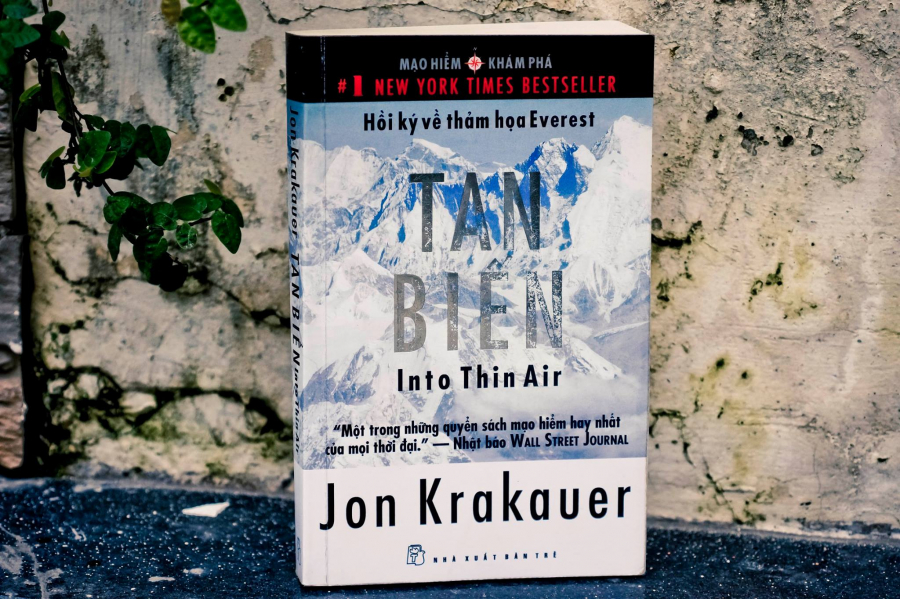
Originally a semi-professional climber, Jon was sent by Outside magazine to join the Adventure Consultants expedition led by Rob Hall to write a 5,000-word article for publication. And Jon's initial goal was just to reach Base Camp (main camp, at an altitude of over 5,000m). But unexpectedly, the final article was up to 16,000 words for publication and not finished, then became a worldwide bestseller, voted Book of the Year by Time magazine and won many other awards.
Jon's memoir, in addition to strongly inspiring readers, helping them witness the most vivid experiences of the bravery and generosity of Everest climbers, also shows the negative aspects of the commercialization of Everest climbing, the serious environmental pollution caused by climbers leaving empty oxygen tanks and garbage on the mountain top.
Into the wild
In April 1992, a young man from a well-to-do East Coast family hitchhiked to Alaska and trekked alone into the wilderness north of Mount McKinley. His name was Christopher Johnson McCandless (or Alexander Supertramp, as he called himself). He donated his entire $25,000 savings to charity, abandoned his car and nearly all his possessions, burned through the cash in his wallet, and set out to create a new life for himself on a solo journey through the wilds of North America...
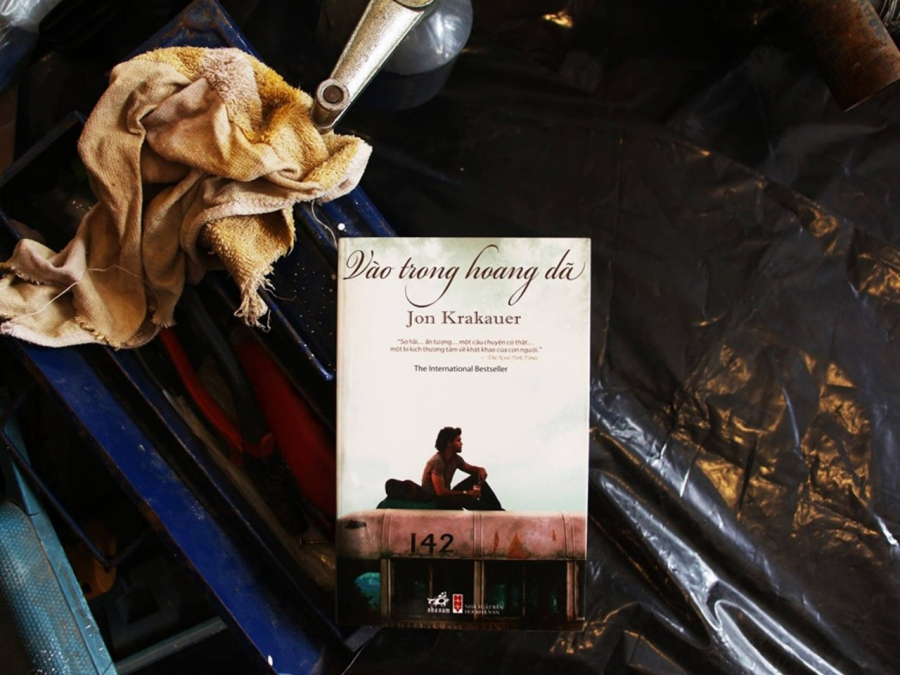
Under the vivid pen of Jon Krakauer,Into the wildThe book, which describes the extraordinary experiences of Alexander Supertramp, became a famous autobiography, an unforgettable work of nature and adventure, praising a devoted and moving life. The story was made into a film in 2007 in the US.
Go Far in a Camper
Camper is the name of a car used as a camping tent or a mobile home. It is considered a symbol of American travel dreams for centuries. Likewise, in his own camper, Khai Don does not hide his burning dream of "pen on the wheel" journeys, road trips across the American wilderness or around Chile with exciting experiences, from there, looking back at the blandness and monotony of daily life inside air-conditioned offices.

The book has two parts,Me. On the roadandMe. AccompanyPart 1 provides new, exciting experiences on the road and part 2 inspires a truly free and adventurous life on a Camper with minimal luggage.
“Nice To Meet You!” - Hello! Are You Coming With Me?
“Nice to meet you!”tells the story of what a twenty-four-year-old girl - Mai Lan - experienced during a year of living her life just as she wanted.
Mai Lan goes traveling. But she goes by “hitchhiking” or “sleeping around”. She earns money while traveling. She makes friends while traveling. The book is called“Nice to meet you!”Due to the days of wandering on the road, this is the phrase Mai Lan uses the most and most often. Although at first it may only mean a greeting. But after the meeting, with stories, smiles and sharing, it becomes a phrase that connects and expresses happiness, and somewhat gratitude too: “Nice to meet you!”
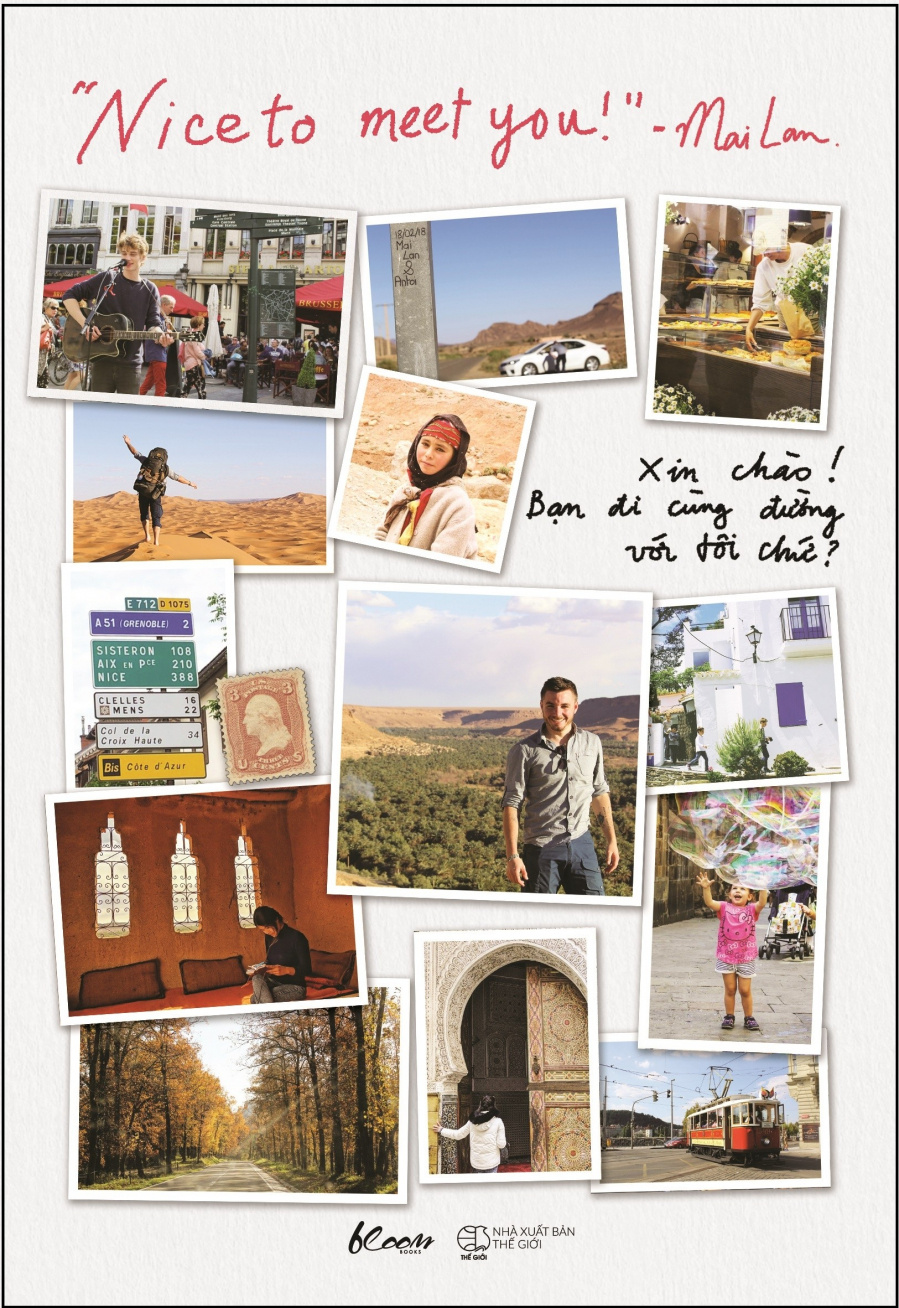
In this book, you may encounter familiar or unfamiliar places, but Mai Lan will not mention any information that you can find in travel guides or on the Internet. The most beautiful things in this book are the people and their kindness. Mai Lan wants that after this book, people will open their hearts and trust each other more, be more generous with smiles and more generous with life.
Also in the book, Mai Lan writes about herself as a completely normal person, making trips that many people look at with admiration, even many people think she is very rich to be able to travel so much. The book has the desire to convey a great motivation, to all those, young or not, who want to go and explore the world. There are many ways to travel. Learn constantly and be bold with what is still unfamiliar.
On the road
The American adventure of Sal Paradise and Dean Moriarty is based on the real-life journeys of Jack Kerouac and Neal Cassady, two of the most important figures of the Beat Generation. It is essentially a journey in search of meaning and authentic experience. Written with a mix of naive sadness and wild abandon, between Kerouac's deep love of America, his compassion for its people and his sense of language, as if it were jazz.
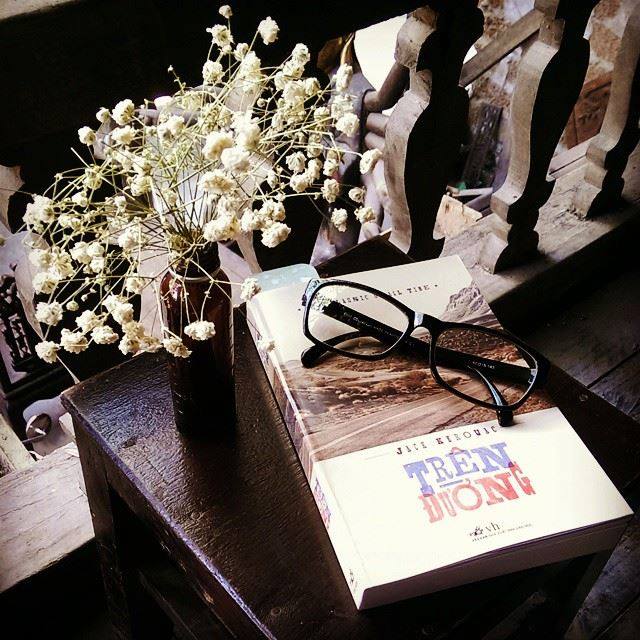
On the Road is a classic example of the American vision of freedom and hope, especially as the "American Dream" begins to crumble. WithOn the road, Jack Kerouac began to develop a style of writing that he called “Spontaneous Prose” which was characterized by many long sentences, loosely structured, written as soon as an idea came to mind, and was highly personal.
Despite fierce controversy since its inception,On the roadis the most vivid evidence of a period in American history, an intellectual movement. The book is recognized as one of the greatest novels of the twentieth century in American and world literature.
Me, Charley and the American Journey

At the age of 58, after living abroad for some time, the American writer and Nobel Prize winner John Steinbeck decided to rediscover his country. He drove a pickup truck with a cab on the bed, and with his dog Charley, he traveled across the United States. It was a journey of nearly 10,000 miles that John Steinbeck called his journey “in search of America.”
John Steinbeck encountered many situations, events, and people during his travels. He found diversity in the American people and landscape, but also sought to generalize. He also faced many personal problems, mainly loneliness and health problems.
The writer has always stood on the side of the workers, has seen his homeland exist not in the places but first and foremost, in the people who have chosen this land as their place to live and, though different, are all just trying to make the most worthy journey of existence.
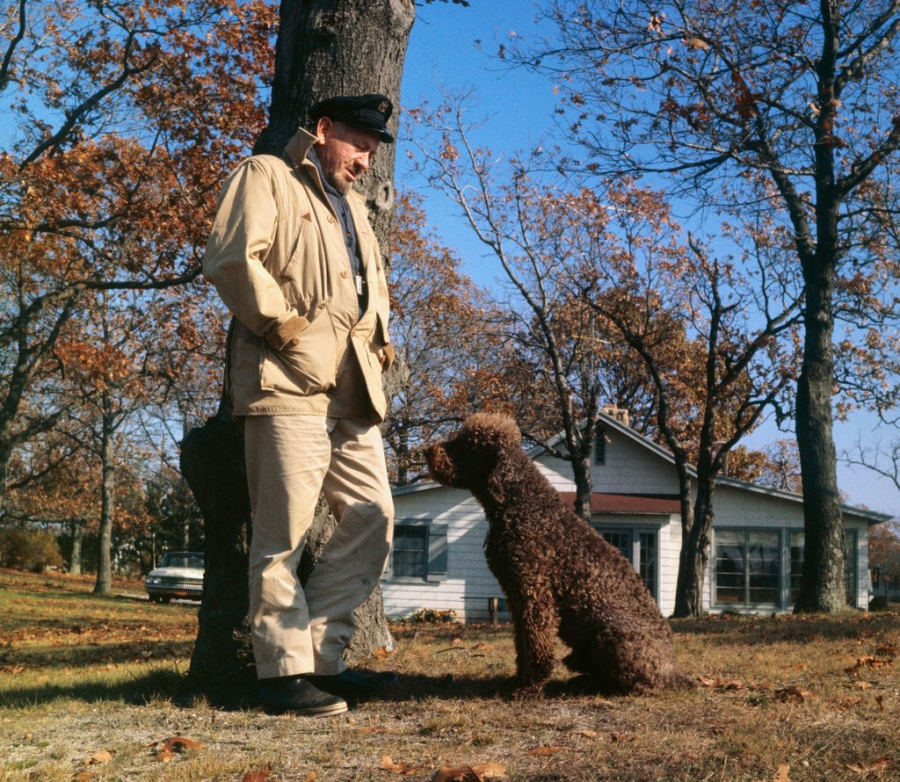
Every journey, adventure, and exploration is a separate entity, no two trips are alike. They have their own personalities, characteristics, differences, and uniqueness. The journey is the person, how can one be the same?
John Steinbeck
Las Vegas Party
One must readParty in Las VegasHunter S. Thompson's book is "the ultimate chronicle" of America's 1970s and a unique comedy in the history of American pop culture.
Published in 1972, this autobiographical novel recounts the journey of journalist Raoul Duke and lawyer Gonzo from California to Las Vegas to cover the “world’s greatest” car race as a way of pursuing the American dream that the 1960s had established. However, with “two bags of weed, seventy-five mescaline tablets, five blister packs of extremely potent acid pellets, half a bottle of cocaine, and a whole galaxy of ecstasy, ecstasy, laughing pills, scream pills…”, the trip of the two not-yet-old but no-longer-young men quickly turns into a constant state of confusion and wakefulness.
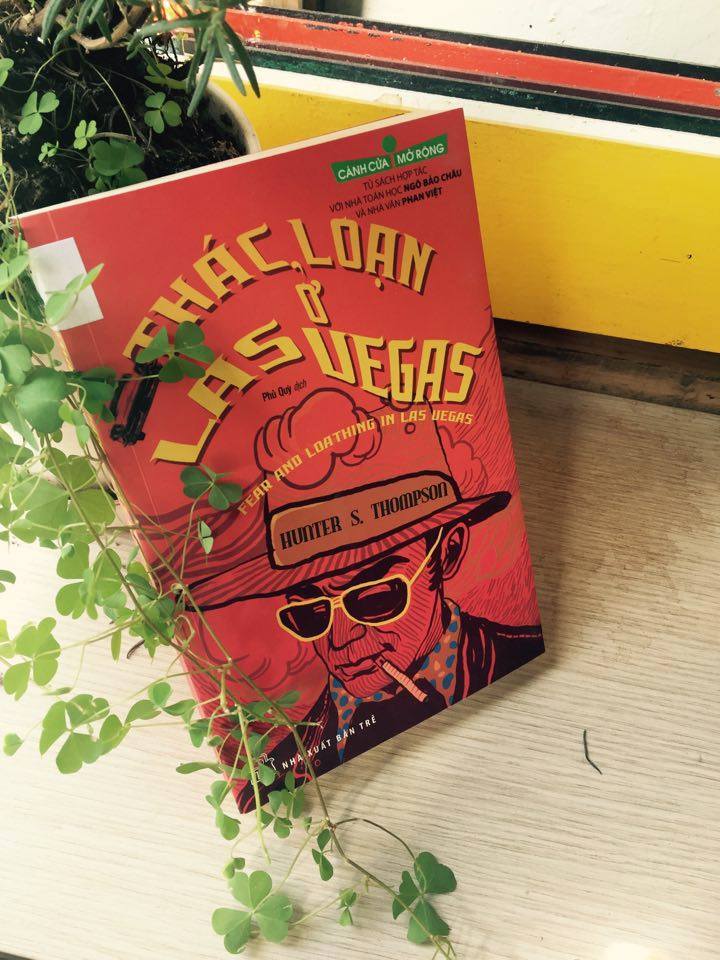
It's hard to tell what they did and saw in Las Vegas - and it doesn't really matter what they did and saw - because in their drug-induced stupor, which is always accompanied by the fear of what they must see and do when sober, Duke and Gonzo show us that the hallucinatory and auditory reality of drugs and the reality of sobriety are equally ridiculous, absurd, and heartbreaking. Being drunk and crazy, therefore, has its own beauty and appeal. Sobriety, on the other hand, is not always something to look forward to.
Six people travel around the world
They are four young Americans, a Norwegian girl, and an English girl. The Vietnam War, the Middle East War, racism, Islam, and the ghosts of the past have pushed them to the city of the sun, and from here, they begin a new adventure to the soul-rending southern Spanish nights, the thousand-pound bullfights, the time-defying Portuguese fortresses, the haunting African jungles, the storms of life, and the broken hearts of people... Without looking for any corner to hide, they have faced life together in the Crusade to find new values...
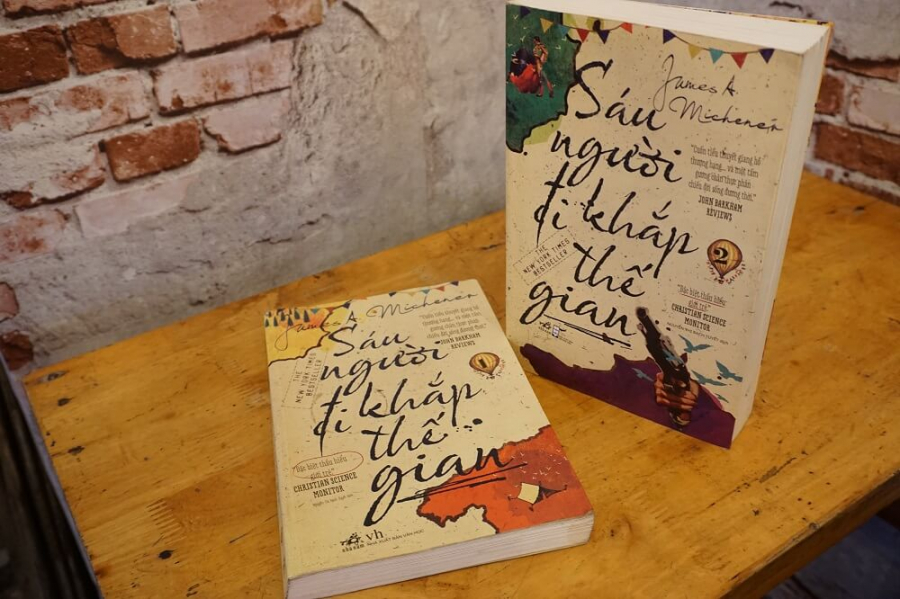
An encyclopedia that seamlessly blends guns and roses, love and sex, religion and art, travel and drugs, heart-wrenching ballads and heart-wrenching screams, it can be saidSix people travel around the worldis a unique and timeless novel about life…
Endless festival
Even after his death, Hemingway continues to captivate readers and define his inimitable vision of literature and humanity. Published in 1964, a few years after his tumultuous death,Endless festivalNot only is it a writer’s memoir, it is also like a feast of words with a way of adjusting the content and flavor that only Hemingway knows the secret (the famous cocktail recipes are the same, which can only be called “the way of Papa Hemingway”). Don’t be fooled by the plain and laconic appearance, because the Paris of Hemingway’s youth is richer than any description, and Hemingway is also one of the rare people who fully grasped that vague appearance and flavor.
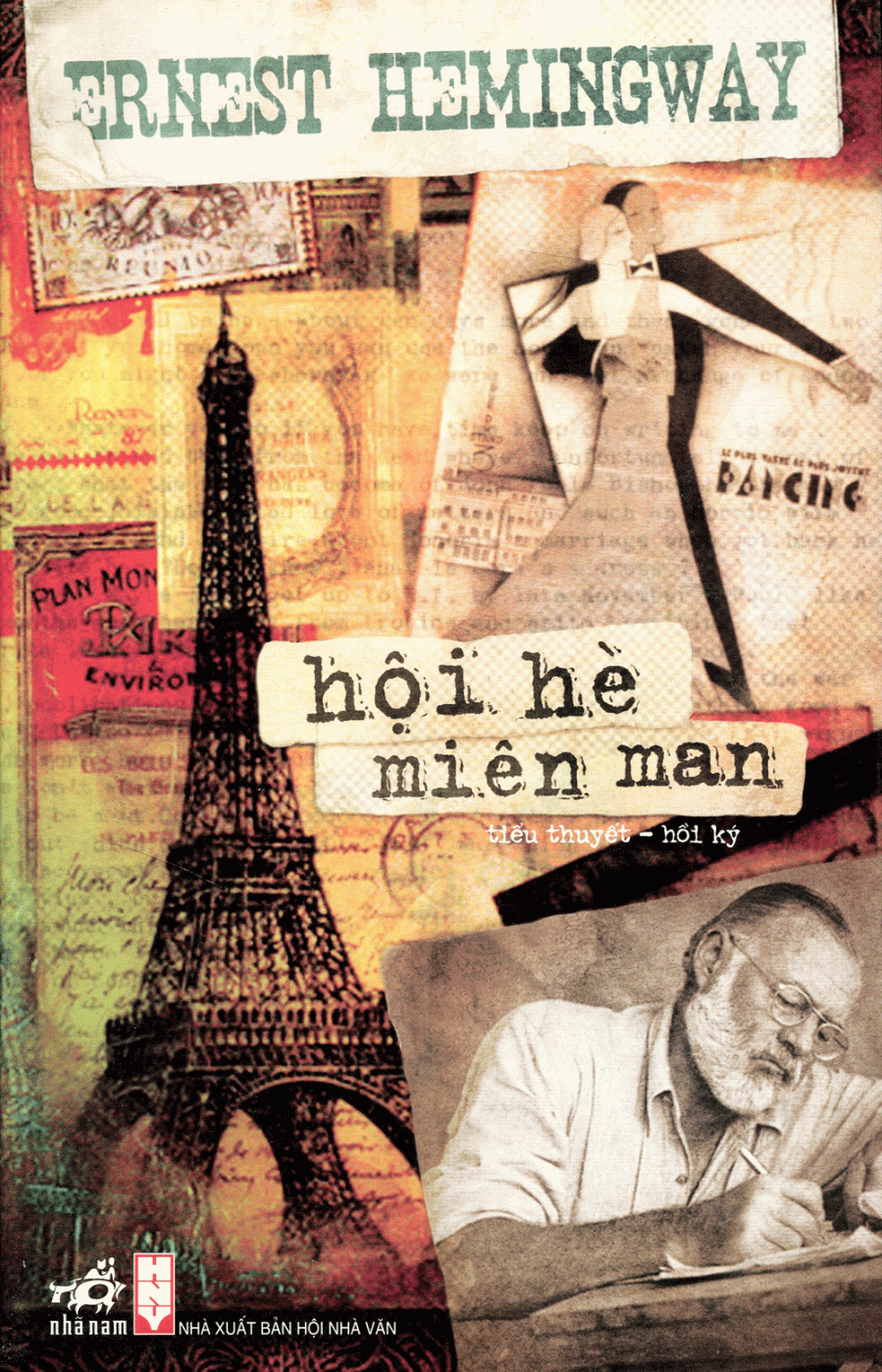
Hemingway arrived in Paris in 1921, and soon became acquainted with famous figures of American literature at that time such as Gertrude Stein, Ezra Pound and Sylvia Beach. Later, he also met other genius writers such as James Joyce, TS Eliot, Scott Fitzgerald... Through Hemingway's memories, we can see a lively Paris, bustling with writers and artists in parties, conversations about life, literature and art. It seems that Paris plays an extremely essential role in Hemingway's heart, as he wrote in a letter to a friend: "If you are lucky enough to live in Paris in your youth, then no matter where you go for the rest of your life, Paris will stay with you, because Paris is a never-ending party."
The 1920s was a period that the French called les années folles (the crazy years). At that time, Paris was the capital of modernism, many streams of art, music and literature gathered and flourished in this city of light – from Picasso, Duchamp, to Stravinsky, Poulenc and Satie, from Breton, Proust, Stein to Joyce. Living in those years of indulgence and enthusiasm, between books and art, was truly a blessing, a priceless treasure. As Hemingway also admitted in the bookEndless festival“To be able to immerse oneself in a completely new literary world and have time to read books in a city like Paris, where one can live and work comfortably regardless of one's wealth or poverty, is like being given a wonderful treasure.”
A Paris with meetings with friends, writing sessions at cafes, borrowing books at Shakespeare and Company, bringing his hungry stomach to enjoy paintings at the Luxembourg Museum... Everything appears in a flash and almost incoherently, because this is not a memoir but just the reminiscences of a Hemingway, who by then had become an old man, looking back on his youth about 35 years ago, the period that was probably the most beautiful of his life, a Paris "in the beginning, when we were very poor and happy."
Eat, pray, love
Liz’s journey to freedom and happiness spans three unique cultural territories, which she names for each stage: Eat (Italy), Pray (India) and Love (Bali, Indonesia). With her witty narrative voice, meticulous observations and sly, sly capture of events, combined with her ability to expose her own most specific emotions, thoughts, desires, and inhibitions, Elizabeth draws us into the act of actively experiencing unique cultural traits, along with the desirable psychological and spiritual maturity that comes from those very cultural expressions.

In Italy, it is the release of the senses and feelings in the simple expressions of life: delicious, unusual dishes, the taste of enjoyment - "the beauty of doing nothing", the good meaning of one's own existence or the sweet feeling of Italian, the language of Dante... Being comfortable with one's own feelings, and moreover, allowing oneself to go to the intense limits of feelings, joy... is the way for Liz to proactively overcome the loneliness and depression that still cling to her. It is also the way for her to escape the way of measuring life by pragmatic norms, such as money or a happy family... that most people confine themselves to.
The feeling of self is the first step for Liz to enter the spiritual journey, in the Ashram of the masters she admired in India. Readers can feel extremely interesting with each step of practice to forget the narrow ego, enter the state of pure spiritual tranquility, where Liz forgives and is forgiven for all the troubles that people unintentionally cause each other in their limited lives, including her own recent tragedy. In Bali, Liz finds a life full of love from old and new friends, with a satisfied lover and a beautiful sharing between people without being hurt by the excesses of her own loved ones.
Live like a Parisian
There is something mysterious about Parisian girls, with their deadly grace and ease. You have noticed it for a long time, but cannot explain why!
Here, in this book, Parisian women themselves define... themselves, and tell us what it means to be a Parisian lady in every way: culture, fashion, and attitude... They'll tell you how to be sexy, how to make your boyfriend jealous, how to approach weddings and the gym the right way, and they'll share their address books (for the city of Paris) so you know where to go at the end of the night, on a birthday, on a smart date, and much more...

Humorous confessions, stylish illustrations, and helpful tips on cooking and housekeeping will help you realize the truth: it's fun to live like a Parisian!
Moments of Shores

Moments of shoresare notes on trips. For Ho Anh Thai, trips to the land of Buddha India, to Persia, the homeland of magical stories with markets and carpets, to the ancient capital of Laos "also sitting together in Southeast Asia", to Korea, or to America, Australia, Europe... are all exciting and attractive with many colors because of the surprising mystery of each unique cultural region. Reading Ho Anh Thai's travelogue, I feel the urge to set off, to the places he has been, to see "Culture is the meeting of people with people".
Missing Dong Van
Like a whisper recounting her stories, emotions and love for the places she has been, Thuy Tran will take readers through other lands, from the "heavenly" point of the Fatherland to Ca Mau Cape, from the plains to remote islands, from the highlands to urban areas, from the high mountains of the Northwest - Northeast to the Mekong Delta,... And especially her love for the "stone plateau" of Dong Van, the articles are like whispers, whispers she wants to say to the land at the headland, where there is "the sound of the mouth flute behind the stone fence", when "the stone plateau blooms", making people restless and worried.Missing Dong Van.
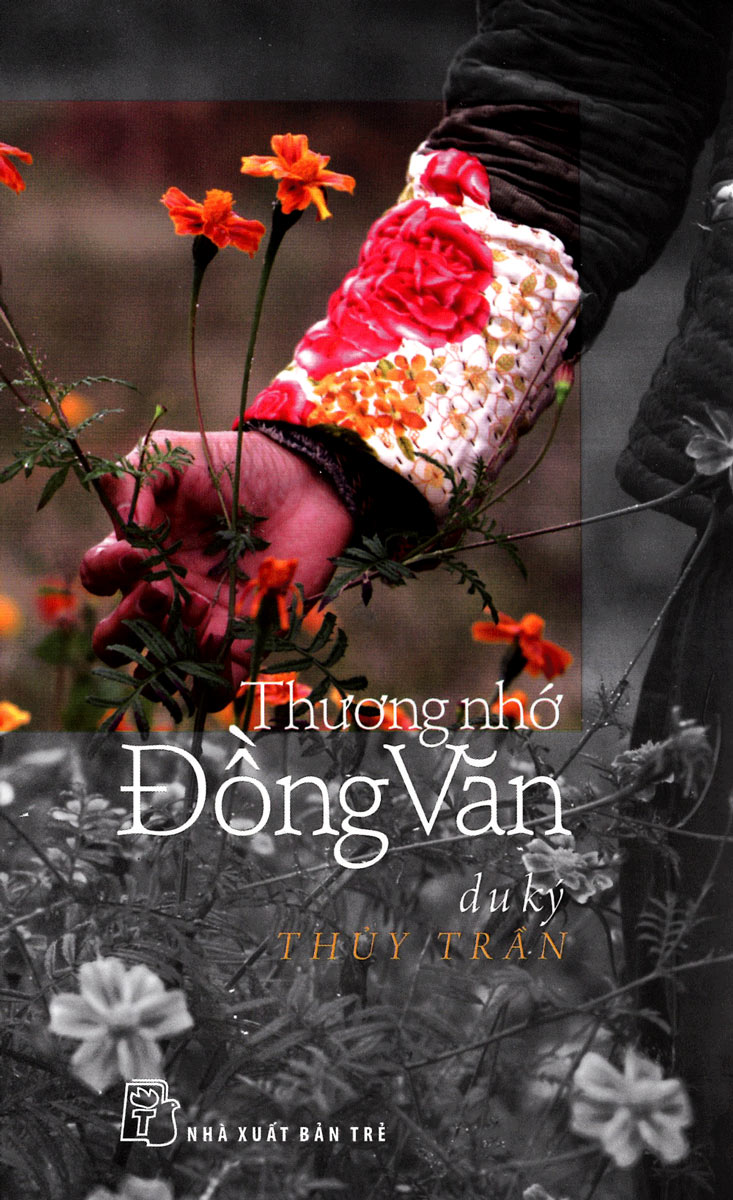
"If I only had one memory, I would definitely miss Sung La. Miss the girl waiting for her husband under the persimmon tree until she forgot to spin. Why did the spring fade on the stone fences? Why did tears fall like dew drops? Why did you propose so that the moon would eventually wane? Are there any fragments of the moon still stuck in you?"
Mekong, drifting alluvium
Mekong, drifting alluviumdivided into four parts: Thailand, Cambodia, Laos & Myanmar and Vietnam. These are five downstream countries, enjoying the natural and human resources that the Mekong River brings. But this is also the area affected by the extreme changes taking place in the upper reaches of this river. Without the ambition to convey grand narrative views, Khai Don quietly goes on solitary personal journeys to tell the story of fates: the fate of a border, a bridge or an anonymous wandering person...
In Cambodia, it is the poor country boys who go to the city to provide sexual services to Western tourists who are looking for “something new”, it is the temple precariously located on the Cambodia-Thailand border, a hot spot of dispute, an invisible fragile border with its own life. In Thailand, it is the bewildered fate of people searching for their gender identity, the bloody road on the bridge over the legendary River Kwai, the monk determined to protect the forest for his homeland, the town where the Vietnamese boat people of the past drifted to. In the Mekong Delta of Vietnam, it is the landslides, floating houses, giant fish that are only in legend. In Myanmar, it is the religious conflict beneath the seemingly peaceful surface and the persecution of an entire nation that has been deliberately pushed into oblivion. And in Laos, it is the tranquility and peaceful life of a land that preserves the tradition of Theravada Buddhism...
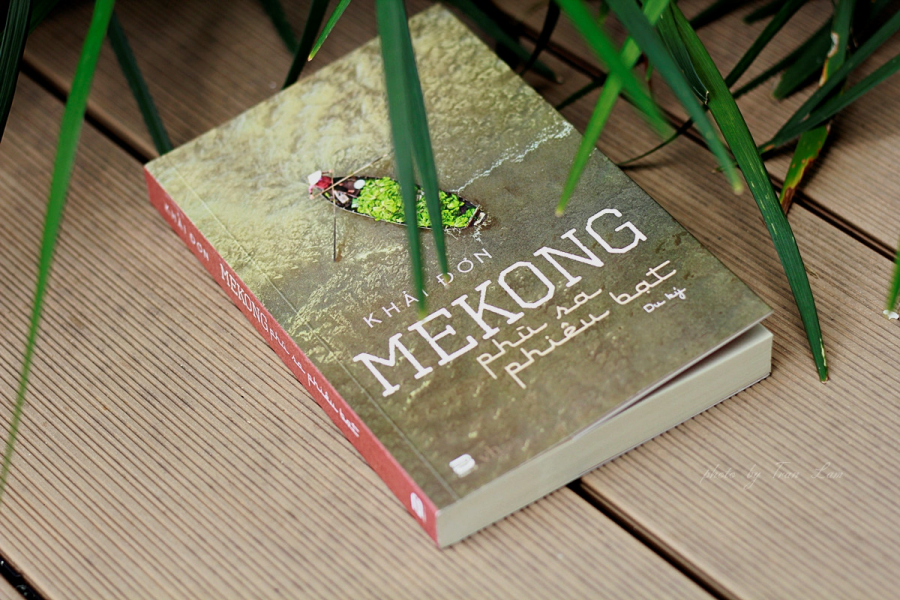
The ordinary people, the drifting lives, the sad, forgotten lives preserved on Khai Don's writings have the sparkling power like wandering grains of alluvium that contribute to the great life of the Mekong, a river with a history, a special reality, an uncertain future.
Fragrance of Ca Mau forest
Fragrance of Ca Mau forestis a book nearly 1000 pages thick, including more than 60 short stories collected from 3 books.Fragrance of Ca Mau forestThe previous print has created a lively countryside scene, imbued with the human soul and landscape of many regions of the West.
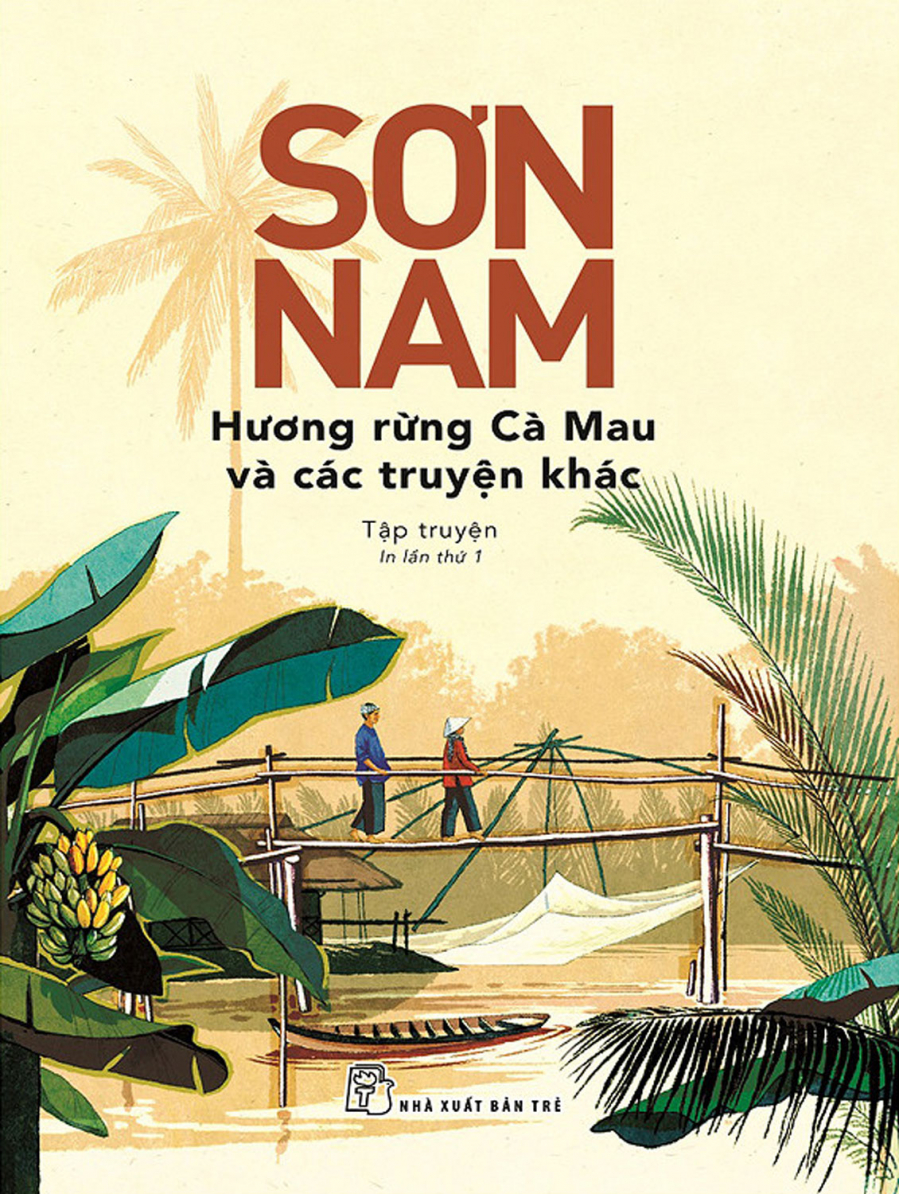
Son Nam's short stories are very concise, succinct, the language is heavy with locality but simple, easy to approach. He writes as if he is telling a story, whispering, confiding. He describes the scene and people vividly down to the smallest detail. In just a few lines, a young girl from the countryside, a heroic killer, a wild boar hunter, a monk in a Khmer temple or a person who "stabbed the river god, destroyed the forest"... appear before the reader with full emotion.
Each short story of "The Old Man of the South" is a synthesis of extensive knowledge of geography, history, and national culture. And not only that, his sensitive and sensitive soul in literature has helped Son Nam's writings preserve the subtleties in the qualities, personalities, and souls of the Western people.
Vespa Travelogue: From Rome to Saigon
Vespa Travelogue: From Rome to Saigonrecounts Giorgio Bettinelli's first trip on a Vespa from Rome to Ho Chi Minh City. The story begins when Giorgio Bettinelli was given an old Vespa. Although he had never ridden a two-wheeled vehicle before, he decided to travel and explore the lands using this special vehicle. On his first trip, he passed through the Indonesian islands of Bali, Java and Sumatra. After that, Giorgio Bettinelli decided to return to Italy to begin his journey from Rome to Saigon.
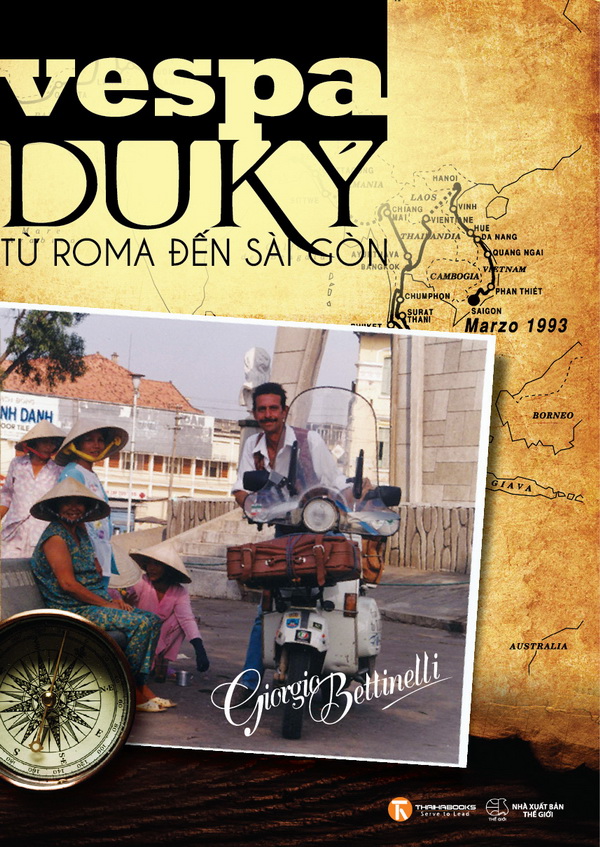
Starting his solo trip at the end of July 1992, within seven months, Beetinelli traveled 24,000 km, passing through nine countries: Greece, Turkey, Iran, Pakistan, India, Bangladesh, Myanmar, Thailand, Laos and finally to Vietnam. Giorgio Bettinelli also passed through the capital Hanoi before reaching the destination of his journey, Ho Chi Minh City.
The book is not simply a travel diary. Every land, every person the author has been to and met is recounted and vividly described, depicting many geographical, historical and realistic features. The book is considered a "miniature map" from Rome to Ho Chi Minh City, a bridge connecting two cultures, two cities in two countries 24,000 km apart.
During the long journey, Giorgio Beetinelli encountered many difficulties - mischief at roadside stalls, health problems on the long and arduous journey... but thanks to the trip, the author had many kind companions and discovered many new things.
Italian mind
“Being Italian means working a full-time job. We never forget who we are, and we are so difficult that it confuses everyone who looks at us.”
For some foreigners, Italy is a vast, romantic and unchanging country. A land of light and perfume, of evening cocktails. But in the minds of Italians, unfortunately or fortunately, there is something else. Along the length of the peninsula with his foreign friends, Beppe Severgnini portrayed his country in a very ironic and sometimes cruel way.
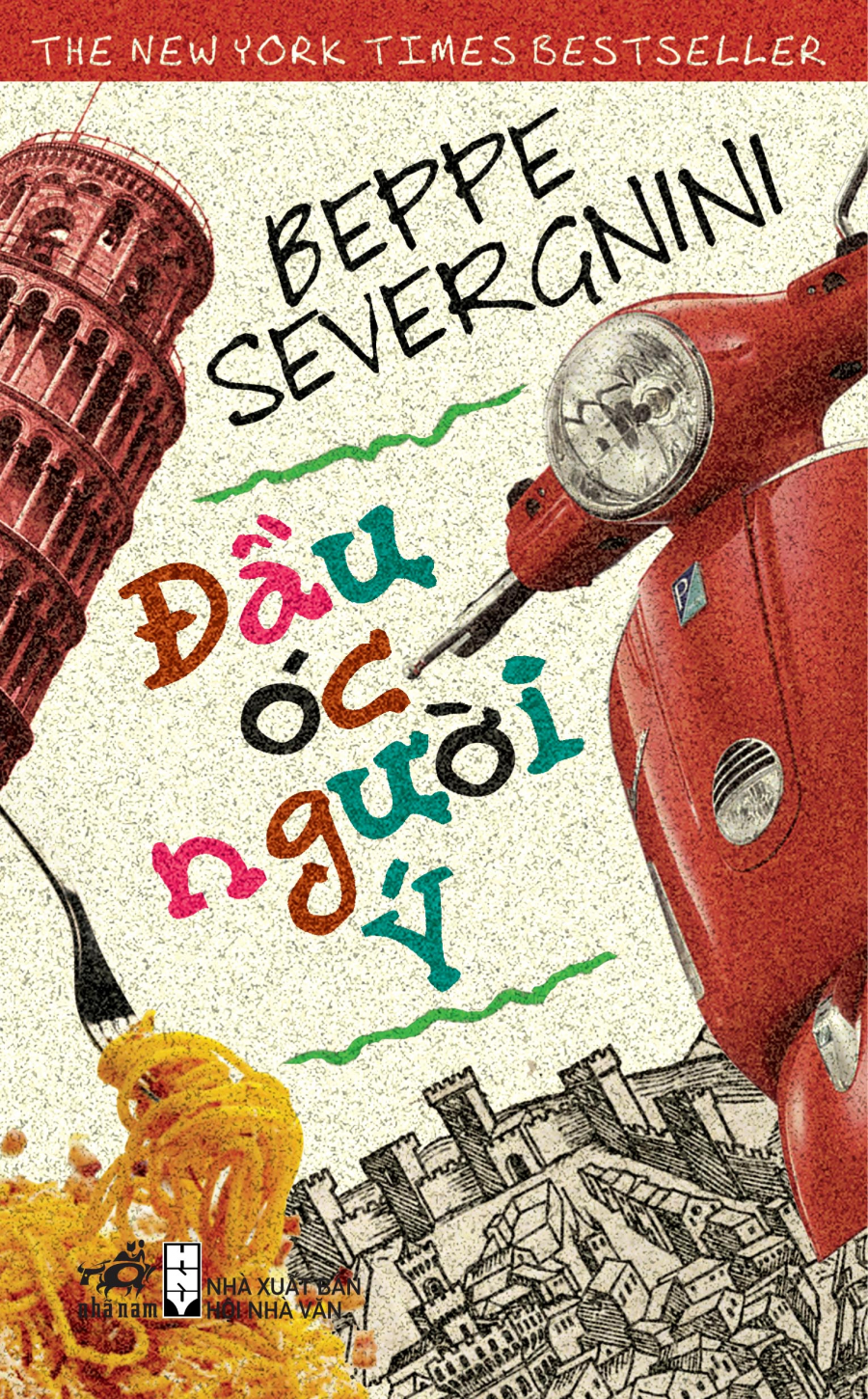
From Milan to Florence, from Rome to Naples, Beppe's sharp pen "sketches" the streets, houses, squares, shops, churches, stadiums, supermarkets and beaches. A humorous, self-deprecating metaphorical journey into the way Italians live today. Ten days, thirty places. Through the eyes and pen of one of Italy's most beloved authors, the portrait of "our Italy is a labyrinth. Fascinating but complicated. Once inside, it's easy to wander around for years. But it must be fun" gradually emerges vividly.
Under the titleLa Bella FiguraIn its original form, The Italian Mind became the first New York Times Bestseller in decades written by an Italian, and has been translated into dozens of languages.
To the place with many fields
To the place with many fieldsis the latest travel sketchbook by Le Phan (author of Mystery Research Club, Cat Land). This is a collection of notes in pictures of interesting stories on the migration journey from the city to Teu-y-pot valley in the heart of Ngoc Linh mountain (Kon Tum) by Phan and young people of INDIgo home, telling about the most simple but extremely beautiful things: the joy of breathing, working, living together, crying and laughing, shedding sweat and blood, wondering, leaving and staying, being yourself, stopping judging, getting angry and worrying about each other, being one with nature, and being happy.

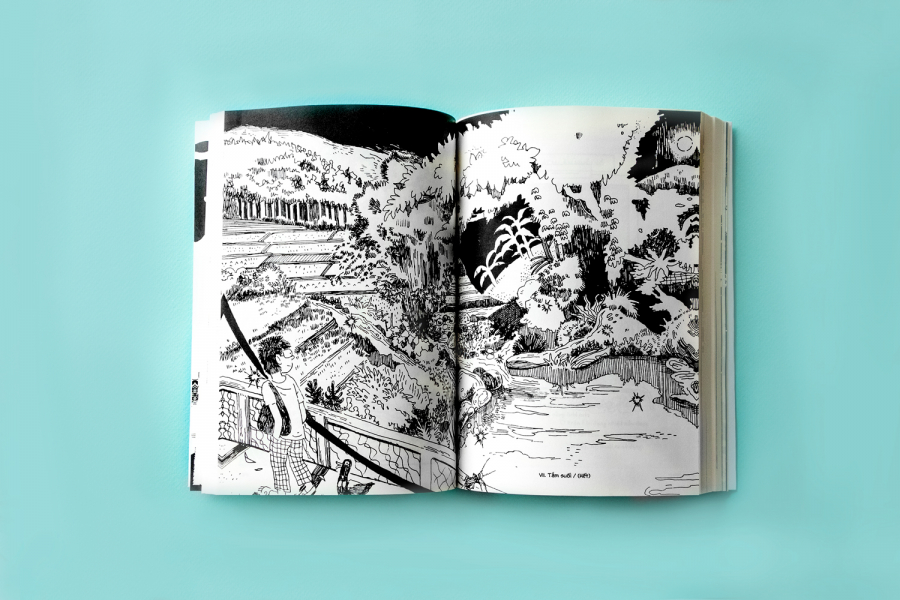

This is a compact, easy-to-read, and extremely cute book, suitable for those who are busy with life and want to find peace in their precious breaks. You can start reading from any chapter, read in any order, read anytime you have time. In particular, with the graphic novel format breaking the stereotype that "comics are only for children", this is definitely a story suitable for all ages with the target audience being adults. To the place with many fields helps bring knowledge about biology, environment, nature, sustainable agriculture in an easy-to-understand and easy-to-receive way for non-professional readers.
Furthermore, in order to fulfill the book's sustainable spirit as well as minimize the carbon footprint in the book publishing process, Du But and the young people at INDIgo home commit that "for every book sold, a tree will be planted in the Teypot valley".
Cycling for Love from India to Europe
Cycling for love from India to Europeis the incredible journey of a young man named Pradyumna Kumar Mahanandia (PK) who traveled for four months by bicycle from Delhi, India, through Afghanistan, Iran, Turkey, Austria and Denmark to meet his girlfriend in the town of Boras, Sweden in May 1977. PK and his girlfriend, Charlotte Von Schedvin, met and fell in love in Delhi on a fateful day in late 1975, when Von Schedvin asked the poor artist to paint her a portrait. They fell madly in love from the first day they met, and spent a month together before Von Schedvin returned home to Boras, Sweden. Vowing to marry the woman he loved, no matter the cost, PK sold all his small possessions to buy a push bicycle. With $80 in his pocket, the artist embarked on a 3,600 km journey, spanning 8 countries from India to Sweden in 4 months. PK's journey also recorded his struggles and despair as he overcame harsh challenges in love as well as in life.
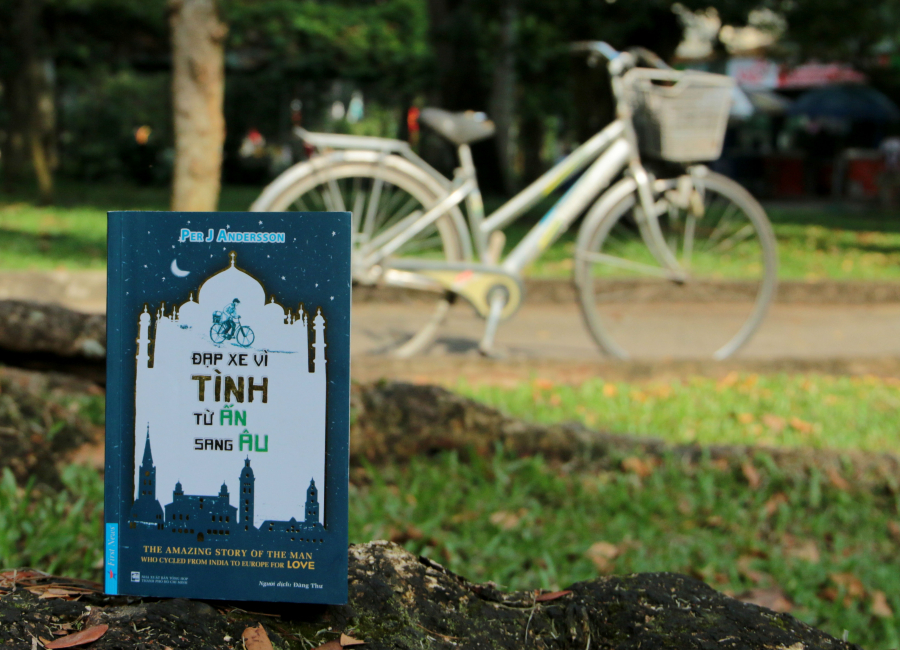

PK and Charlotte are married and still living happily together
During his journey, PK couldn't even tell the difference between Sweden and Switzerland, he just got on his bike and went. "I had no knowledge of geography, of how big Europe was," PK said. "I didn't even know how to calculate distances in kilometers. If I had known how far it was, I probably wouldn't have dared to go. Luckily I didn't know!", PK shared.
What's So Strange About Europe?
The book is the author's notes and descriptions of his travel journey through several European countries, from which he shares authentic and new experiences about culture, history, cuisine and people in foreign lands.
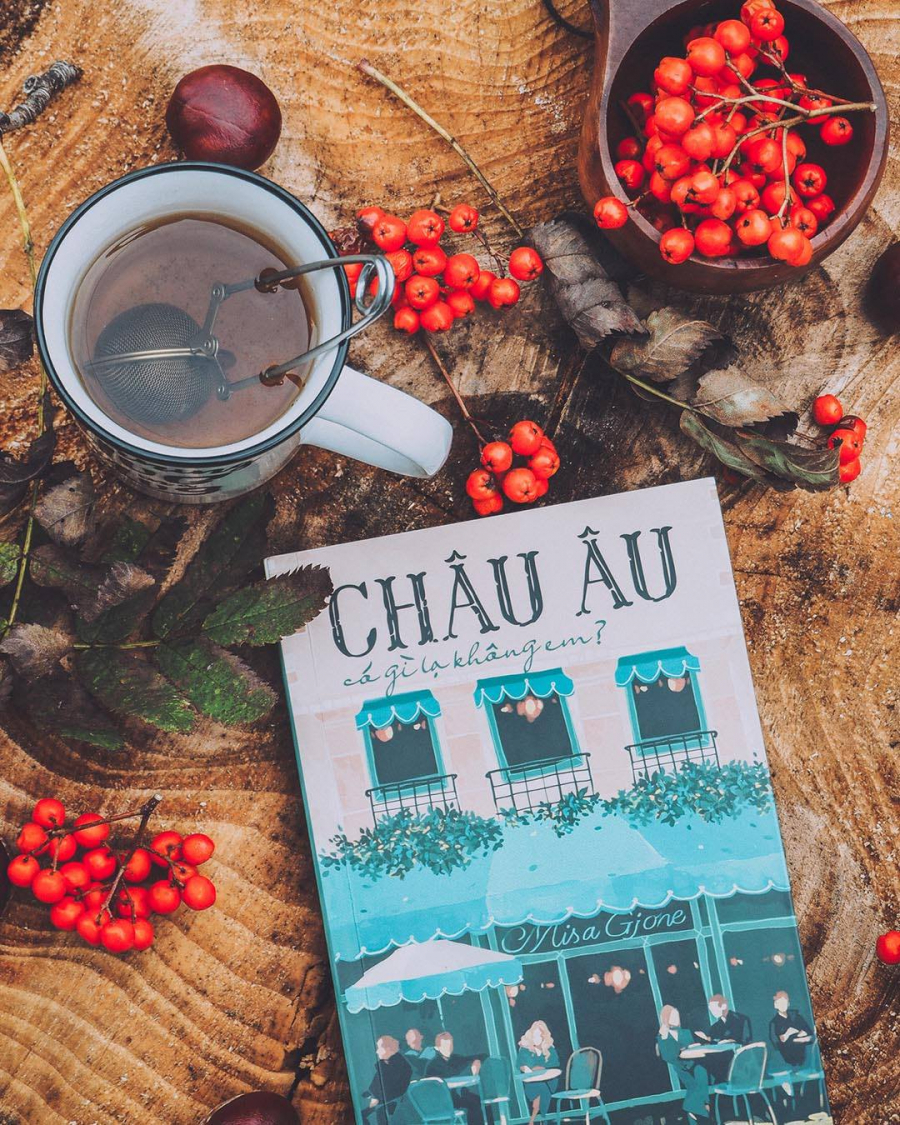

What is strange about Europe through the eyes of Misa Gjone? It is an ancient Europe with long-standing architectural works. It is a lovely Europe with the brilliant colors of geranium pots and ripe wild fruits. It is a vibrant Europe with endless festivals; times going to the hytte, fika sessions with family and friends. It is also a "sinful" Europe with girls with anxious eyes on the red light district, the stark contrasts of light and dark in modern life...
Che Guevara's Diary
This is not a story about extraordinary heroic deeds, nor the notes of a gossip. This is an experience to explore life and true emotions and ideas in a romantic, arduous, and adventurous journey across Latin America for more than nine months of Ernesto Che Guevara and his close friend Alberto Granado. The exciting journey of two young people traveling together on an old motorbike, along with what they witnessed from reality, ignited the fire of dreams and desires of a person who wanted to conquer and change the world around him. And that person dared to live and do so. The person who later made the whole world admire. The person whose name became a legend - Che!
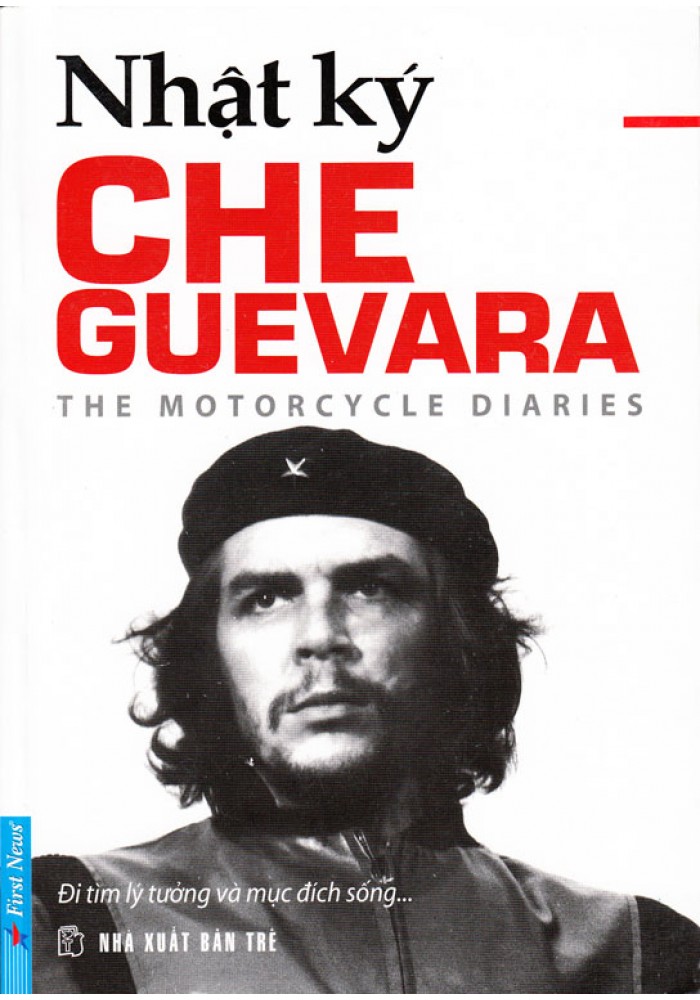
Reading Che's honest diary entries, we will relive and accompany Che's interesting journey, understand Che's romantic soul, emotions and special personality, and understand what the young Ernesto felt through this journey that greatly contributed to forming the person Che became.
From the Amazon Jungle to the Homeland of Bolero
This book is like a special documentary, recording the author's journey of discovery and penetration into South America. As in the book's introduction:Why South America?, the author wrote, South America with its hot beauty queens, with strong, talented soccer players like Maradona had attracted him since childhood. But the dream of conquering South America flared up again when he watched the movieMotorcycle Diariestells the story of medical student Che Guevara's journey across Latin America.
So in 2008, Nguyen Tap spent 2 months living in the land of the Quechua people - descendants of the Incas; in 2009, he had two trips to Mexico; at the end of 2011, he spent 4 months infiltrating the indigenous tribes of the Amazon, Peru and Bolivia. And most recently, he returned there to spend his days as a Cuban resident. His exploration of Cuba - the homeland of cigars and Bolero - ended just a few days before Fidel Castro passed away.
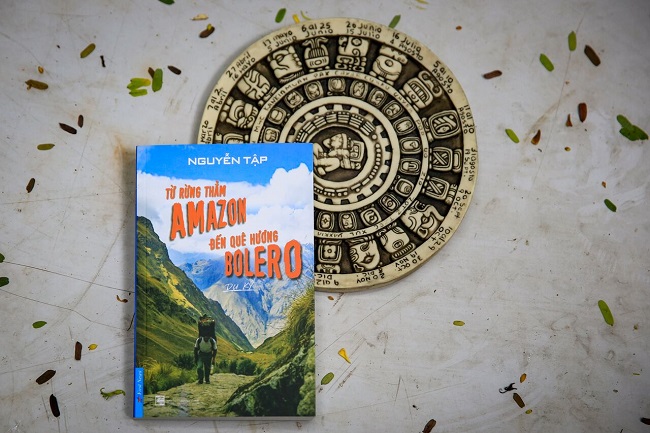
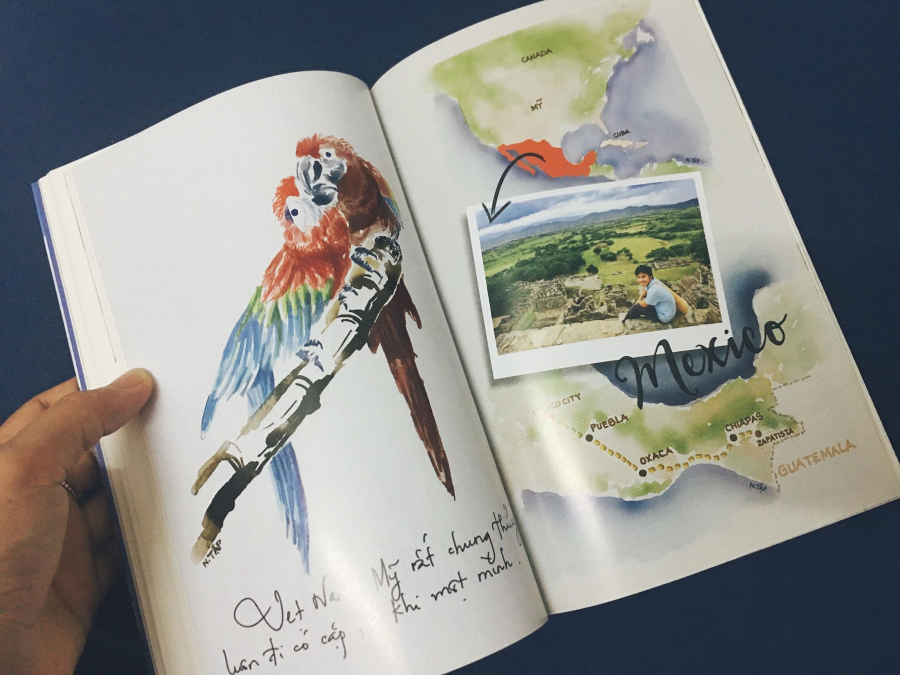

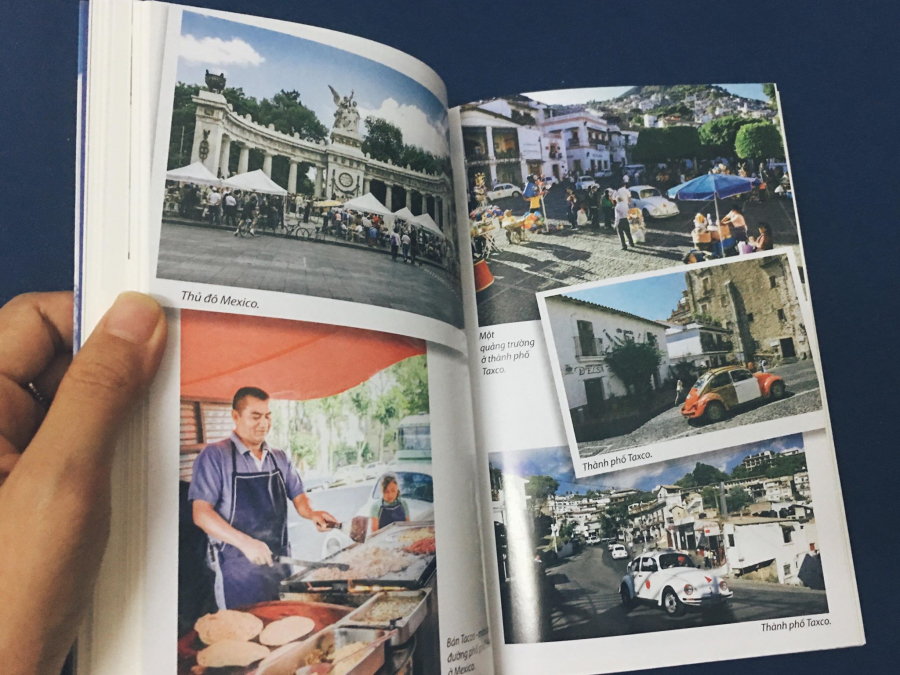
This travelogue consists of 4 parts: Amazon (In the deep Amazon jungle), Mexico (Land of the crystal skulls), Peru (Flying over the stone city) and Cuba (Wandering in the homeland of Bolero). Stories from charms, magic, divination left in the urban areas with parallel civilized and wild life, strange customs of tribes in the deep jungle, stone cities, drifting islands, doll islands... are written truthfully, concisely along with sketches showing that the author has a very unique approach to reality. The dusty, romantic and powerful travelogue is inspiring enough for young readers to arrange their own exciting journeys after closing the book.
Feral
Feralis Cheryl Strayed's memoir about her 1,100-mile hike along the Pacific Crest Trail when she was 26 years old. After years of devastation and disorientation, enduring the death of her beloved mother and a painful divorce, she decided to "pack up and go." For Cheryl Strayed, returning to the "wilderness" was the instinctive call of a heart that, despite being covered in blood, still yearned to rekindle the flame of love for life. And during that journey of more than 1,000 miles, she met many people, overcame many seemingly impossible challenges, and then reflected on life and found herself again.

After being published in March 2013,Feralquickly climbed to the top of the bestseller list in the US and held that position for 7 consecutive weeks. To date,FeralIt has been translated into 28 languages and was adapted into a film in 2014.
Green Travelogue - Journey to Save the Sea

Green Travelogue - Journey to Save the Seais a diary recording the most remarkable things in the journey of "hunting for trash photos" along the coast of Vietnam over the past years of photographer Nguyen Viet Hung (Hung Lekima). With the desire to spread the message of environmental protection and building green spaces, Hung Lekima has traveled a 7,000 km long journey full of thoughts, pain, more sadness than joy to discover the level of pollution that humans have caused to the coasts and lands of Vietnam, from there sending the wish to multiply the green color in the thoughts and actions of everyone.


























